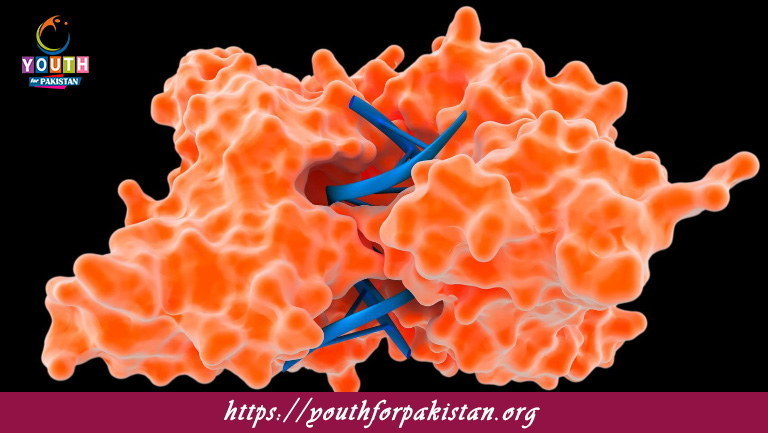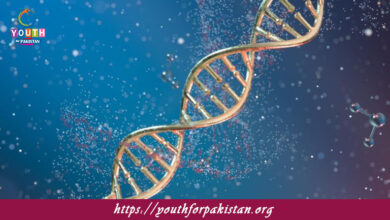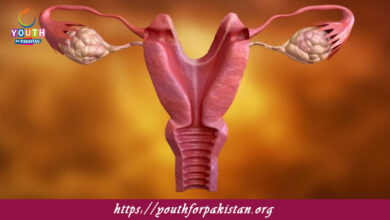Bio Enzymes MDCAT MCQs with Answers

Welcome to the Bio Enzymes MDCAT MCQs with Answers. In this post, we have shared Bio Enzymes Multiple Choice Questions and Answers for PMC MDCAT 2024. Each question in MDCAT Biology offers a chance to enhance your knowledge regarding Enzymes MCQs in this MDCAT Online Test.
Enzymes are primarily composed of:
a) Carbohydrates
b) Nucleic acids
c) Proteins
d) Lipids
Which of the following is not a function of enzymes?
a) Catalyzing biochemical reactions
b) Acting as a structural component
c) Lowering activation energy
d) Increasing reaction rate
The substance upon which an enzyme acts is called the:
a) Coenzyme
b) Inhibitor
c) Substrate
d) Product
The region on an enzyme where the substrate binds is known as the:
a) Active site
b) Allosteric site
c) Enzyme-substrate complex
d) Catalytic center
Enzymes that require a non-protein molecule for activity are called:
a) Apoenzymes
b) Holoenzymes
c) Coenzymes
d) Proenzymes
Which of the following is a common characteristic of all enzymes?
a) They increase the energy of activation
b) They are consumed in the reaction
c) They speed up the rate of biochemical reactions
d) They are irreversible
Enzymes that catalyze the addition of water to substrates are known as:
a) Hydrolases
b) Oxidoreductases
c) Ligases
d) Transferases
Enzymes that catalyze redox reactions are classified as:
a) Hydrolases
b) Oxidoreductases
c) Transferases
d) Lyases
The model that describes enzyme activity where the enzyme changes shape to fit the substrate is known as:
a) Lock and key model
b) Induced fit model
c) Transition state model
d) Enzyme-substrate complex model
The effect of temperature on enzyme activity is described by the:
a) Michaelis-Menten equation
b) Arrhenius equation
c) Temperature coefficient
d) Bell curve
Enzymes that catalyze the transfer of functional groups are known as:
a) Hydrolases
b) Transferases
c) Isomerases
d) Ligases
The term used to describe the optimum pH for an enzyme’s activity is:
a) Enzyme specificity
b) Enzyme denaturation
c) Optimal pH
d) Isozyme
Enzymes that join two molecules together are known as:
a) Lyases
b) Ligases
c) Hydrolases
d) Isomerases
The effect of increasing substrate concentration on the rate of an enzyme-catalyzed reaction is described by the:
a) Lock and key model
b) Michaelis-Menten kinetics
c) Lineweaver-Burk plot
d) Eadie-Hofstee equation
Which factor can denature an enzyme?
a) Optimal temperature
b) Optimal pH
c) High temperature
d) Proper substrate concentration
Enzyme inhibitors that bind irreversibly to an enzyme are known as:
a) Competitive inhibitors
b) Non-competitive inhibitors
c) Irreversible inhibitors
d) Reversible inhibitors
The region on the enzyme where an allosteric effector binds is called the:
a) Active site
b) Allosteric site
c) Substrate binding site
d) Enzyme-substrate complex
In the presence of a competitive inhibitor, the Km of an enzyme-catalyzed reaction:
a) Increases
b) Decreases
c) Remains the same
d) Becomes zero
The maximum rate of an enzyme-catalyzed reaction when the enzyme is saturated with substrate is known as:
a) Km
b) Vmax
c) Michaelis constant
d) Turnover number
Enzymes that catalyze the interconversion of isomers are called:
a) Hydrolases
b) Ligases
c) Isomerases
d) Transferases
The enzyme responsible for the conversion of hydrogen peroxide to water and oxygen is:
a) Catalase
b) Amylase
c) Lipase
d) Protease
Enzyme activity is often regulated by:
a) Changes in pH
b) Temperature
c) Allosteric effectors
d) All of the above
The process by which an enzyme becomes less active due to environmental changes is known as:
a) Activation
b) Denaturation
c) Inhibition
d) Induction
Which of the following describes the relationship between an enzyme and its substrate?
a) Lock and key model
b) Competitive model
c) Allosteric model
d) Induced fit model
The turnover number of an enzyme refers to:
a) The maximum rate of reaction
b) The number of substrate molecules converted per enzyme molecule per second
c) The concentration of substrate at half-maximum velocity
d) The amount of enzyme required for complete substrate conversion
Enzyme cofactors can be:
a) Vitamins
b) Metal ions
c) Organic molecules
d) All of the above
Enzyme specificity refers to:
a) The ability of an enzyme to act on a wide range of substrates
b) The ability of an enzyme to recognize and bind to a specific substrate
c) The ability of an enzyme to function in different pH ranges
d) The ability of an enzyme to catalyze multiple reactions
Which enzyme is responsible for breaking down starch into maltose?
a) Lactase
b) Amylase
c) Sucrase
d) Pepsin
Which term describes an enzyme’s ability to lower the activation energy of a reaction?
a) Catalysis
b) Substrate specificity
c) Enzyme efficiency
d) Activation energy reduction
Inhibitors that bind to the enzyme-substrate complex are classified as:
a) Competitive inhibitors
b) Non-competitive inhibitors
c) Allosteric inhibitors
d) Irreversible inhibitors
The enzyme lactase is responsible for:
a) Breaking down proteins
b) Breaking down fats
c) Breaking down lactose into glucose and galactose
d) Synthesizing proteins
Which of the following statements about enzyme inhibitors is true?
a) All enzyme inhibitors increase the enzyme’s activity
b) Non-competitive inhibitors can bind to both the enzyme and enzyme-substrate complex
c) Competitive inhibitors bind to the allosteric site of the enzyme
d) Irreversible inhibitors bind loosely to the enzyme
Enzyme kinetics is often studied using which model?
a) Lock and key model
b) Michaelis-Menten model
c) Induced fit model
d) Allosteric model
Enzymes that catalyze the breakdown of proteins are known as:
a) Amylases
b) Lipases
c) Proteases
d) Nucleases
Enzymes that facilitate the transfer of a phosphate group are called:
a) Kinases
b) Phosphatases
c) Transferases
d) Hydrolases
Enzyme activity can be regulated by:
a) Allosteric regulation
b) Covalent modification
c) Feedback inhibition
d) All of the above
Enzymes that remove phosphate groups from proteins are known as:
a) Kinases
b) Phosphatases
c) Ligases
d) Isomerases
Which type of enzyme regulation involves the binding of an effector molecule at a site other than the active site?
a) Competitive inhibition
b) Non-competitive inhibition
c) Allosteric regulation
d) Feedback inhibition
The process of enzyme-catalyzed reactions involving substrate molecules is often depicted as:
a) A bell-shaped curve
b) A reaction coordinate diagram
c) A saturation curve
d) A rate equation
Enzyme turnover number is defined as:
a) The number of substrate molecules converted to product per unit time
b) The concentration of enzyme needed to convert the substrate
c) The rate at which an enzyme is denatured
d) The amount of enzyme required to reach Vmax
Enzymes that catalyze the breakdown of nucleic acids are called:
a) Nucleases
b) Lipases
c) Amylases
d) Proteases
If you are interested to enhance your knowledge regarding Physics, Chemistry, Computer, and Biology please click on the link of each category, you will be redirected to dedicated website for each category.





